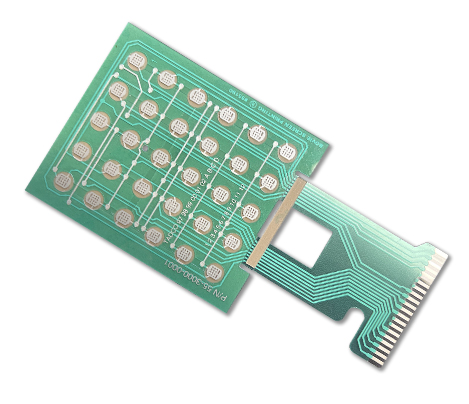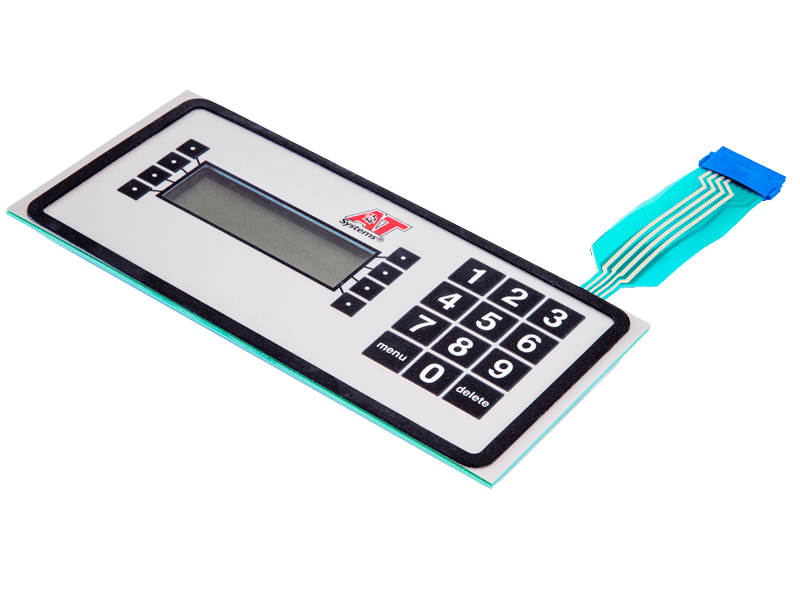Recognizing the Importance of Membrane Switches in Interface
Membrane buttons are indispensable parts in the style of reliable interface, facilitating not just capability yet additionally enhancing visual charm and individual interaction. Their one-of-a-kind functions, such as resistance to environmental factors and personalized styles, make them suitable for a diverse selection of applications throughout numerous markets. As we discover the various benefits and future patterns related to Membrane innovation, it becomes clear that these switches are extra than simply elements; they represent a merging of technology and functionality. The implications of this modern technology on user experience deserve analyzing further.
What Are Membrane Switches?

The spacer layer, which contains sticky properties, allows for the splitting up of the circuit layer from the overlay, ensuring that the switch stays in a non-activated state up until pushed. When stress is related to the overlay, it compresses the spacer layer, bridging the void and finishing the circuit in the underlying layer. This design not only lowers the physical space required for standard mechanical buttons yet additionally improves the resilience of the tool, as Membrane switches are usually resistant to dust, dampness, and various other ecological variables.
Generally discovered in applications ranging from consumer electronics to medical devices, Membrane buttons are indispensable to contemporary technology, providing a user-friendly and efficient user interface that straightens with modern style demands.
Benefits of Membrane Switches
While countless switch modern technologies exist, Membrane Switches deal distinct benefits that make them especially preferable in various applications. Among the primary advantages of Membrane buttons is their compact layout, which enables for space-saving implementations in gadgets where realty is restricted. Their thin account not only improves visual allure but additionally helps with light-weight construction.
An additional significant benefit is their resistance to environmental aspects. Membrane switches are generally secured versus wetness, dust, and pollutants, making them suitable for usage popular atmospheres, such as medical gadgets and commercial equipment. This longevity extends the life expectancy of the button, decreasing upkeep prices and enhancing dependability.
In addition, Membrane switches can be personalized to satisfy certain design demands, incorporating special graphics and colors that improve user communication. Their responsive comments choices can likewise be customized to offer an enjoyable individual experience. In addition, Membrane buttons are economical, particularly in high-volume applications, as they can be created successfully.
Applications in Numerous Industries

In the consumer electronic devices sector, Membrane switches prevail in tools such as microwaves, washing machines, and remote controls. Their tactile comments and visual options enhance customer experience while giving a streamlined, modern-day look. Additionally, automotive makers utilize Membrane buttons in dashboard controls and infotainment systems, where space is limited, and customer involvement is crucial.
Moreover, the commercial market leverages Membrane switches in control panels for machinery and devices, enabling instinctive operation in frequently severe atmospheres. Their resistance to chemicals and dampness makes certain long life and reliability in these applications. Overall, the adaptability of Membrane Switches adds substantially to their prevalent usage, making them crucial in numerous technical domain names.
Design Factors To Consider for Membrane Buttons

When developing Membrane buttons, numerous key considerations have to be taken into consideration to make sure optimal performance and user experience. The option of products is vital; selecting sturdy, top notch substrates can enhance the button's durability and resistance to environmental variables such as wetness and temperature fluctuations.
Second of all, the design of the visuals overlay need to prioritize clearness and simplicity of usage. Icons and message have to be legible, and the layout ought to help with instinctive interaction (membrane switches). In addition, responsive responses is crucial; including a responsive dome or other systems can improve the customer experience by offering physical verification of activation
An additional vital aspect is the switch's electrical efficiency. Developers should make sure that the conductive traces are properly created to minimize resistance and prevent signal disturbance. This involves evaluating the needed actuation force and making certain compatibility with the electronic elements they will certainly user interface with.

Future Patterns in Membrane Technology
As technology remains to breakthrough, Membrane buttons are poised to develop significantly, driven by innovations in products and making methods. One emerging trend is the incorporation of innovative products, such as adaptable substratums and conductive inks, which enhance resilience and lower the overall weight of Membrane buttons. These materials not just enhance the responsive action however likewise allow for the layout of buttons that can withstand harsher environmental problems.
Furthermore, the integration of touch-sensitive innovations is changing standard Membrane Switches right into more interactive interface. Capacitive touch sensors embedded within Membrane switch panels can offer a much more receptive and user-friendly individual experience, lining up with the try these out growing demand for smooth, contemporary styles in consumer electronic devices.
Furthermore, advancements in printing methods, such as electronic and 3D printing, enable rapid prototyping and customization of Membrane buttons. This flexibility enables manufacturers to react quicker to market demands and consumer choices.
Lastly, sustainability is coming to be a significant focus, with suppliers exploring eco-friendly products and processes. As these trends unravel, the future of Membrane modern technology guarantees enhanced capability, aesthetic appeal, and ecological obligation, solidifying their role in innovative interface across various sectors.
Conclusion
In final thought, Membrane Switches stand for a vital part in the design of interface, integrating functionality with visual versatility. Their benefits, consisting of toughness more info here and resistance to environmental factors, make them ideal for diverse applications across various industries. In addition, thoughtful layout factors to consider enhance customer interaction and experience. As innovations in innovation proceed, the development of Membrane switches is anticipated to further fine-tune interface, driving technology and boosting usability in a progressively complex technical landscape.
Membrane switches are essential components in the layout of efficient individual interfaces, promoting not only functionality however additionally enhancing aesthetic charm and user communication.Membrane Switches serve as a crucial element in various user interfaces, assisting in a smooth communication between users and electronic gadgets.While countless button technologies exist, Membrane Switches deal unique recommended you read benefits that make them specifically preferable in various applications.Furthermore, Membrane switches can be tailored to satisfy particular style demands, including one-of-a-kind graphics and shades that boost customer communication.In verdict, Membrane Switches represent a crucial element in the style of individual interfaces, integrating performance with aesthetic flexibility.